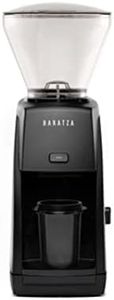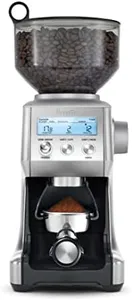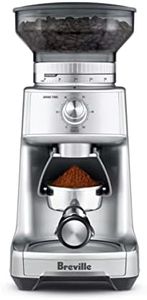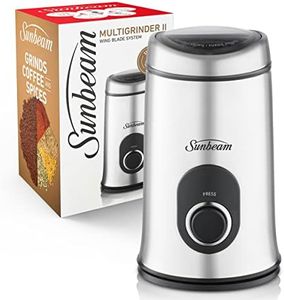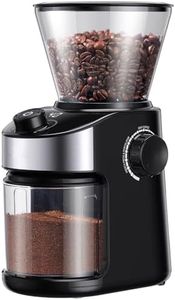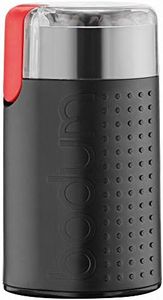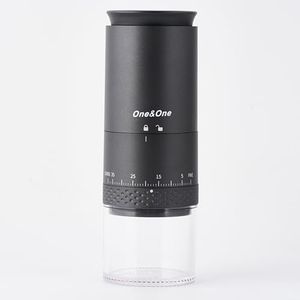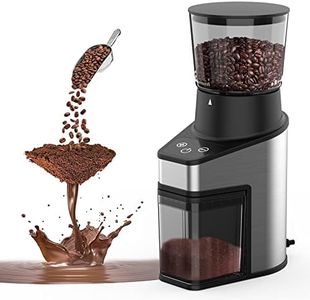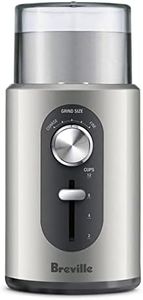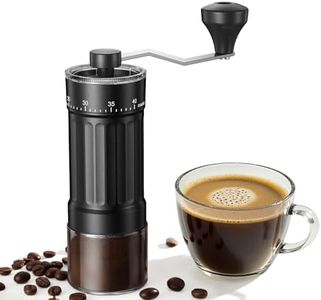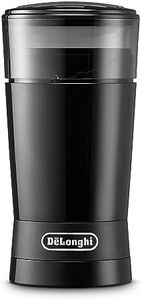We Use CookiesWe use cookies to enhance the security, performance,
functionality and for analytical and promotional activities. By continuing to browse this site you
are agreeing to our privacy policy
10 Best coffee bean grinders
From leading brands and best sellers available on the web.Buying Guide for the Best coffee bean grinders
Choosing the right coffee bean grinder can make a huge difference in the flavor and freshness of your coffee. The way beans are ground affects extraction and taste, so it's important to get a grinder that matches your brewing style and preferences. Focus on understanding what features matter most for your daily routine and how different types of grinders can impact your coffee experience. Think about how often you'll use it, how much coffee you prepare at once, and how involved you want to be in the grinding process.Grinder Type (Blade vs. Burr)Grinders come mainly in two types: blade and burr. Blade grinders use spinning blades to chop beans, which is a simpler and often less expensive method. However, they can produce uneven grind sizes which may affect taste. Burr grinders crush beans between two surfaces, resulting in a more uniform grind and better-tasting coffee. Burr grinders are divided into flat and conical types, both offering good consistency. If you want control over your grind size and better coffee quality, go for a burr grinder. If convenience and simplicity are your priority, a blade grinder might be enough, especially if you're not too picky about your coffee.
Grind Size AdjustabilityGrind size adjustability refers to how easily you can change the thickness of your coffee grounds. This matters because different brewing methods require different grind sizes: fine for espresso, medium for drip, and coarse for French press. Some grinders have a few preset steps, while others offer many settings or even stepless adjustment for more precision. If you only make one type of coffee, limited settings may suffice. If you experiment with different brewing methods, look for a grinder with a wide range of grind sizes.
CapacityCapacity tells you how much coffee the grinder can handle at once, both in terms of beans and ground coffee. If you brew only a cup or two at a time, a small capacity is fine and saves space. If you make coffee for a group or want to grind in bulk, a larger capacity is helpful. Think about your usual routine—choose a size that matches the amount of coffee you typically prepare, avoiding waste or repeated refilling.
Manual vs. Electric OperationManual grinders require you to turn a handle by hand, while electric grinders work at the push of a button. Manual grinders are quieter, portable, and don’t need electricity, but grinding takes more effort and time. They're great if you enjoy a hands-on process or want to use them on the go. Electric grinders are quick and convenient—ideal for busy mornings or regular use at home. Choose manual if you value portability and don't mind a little exercise; pick electric for speed and ease of use.
Ease of CleaningKeeping your grinder clean ensures consistent flavor and prevents old grounds from affecting future coffee. Some grinders have removable parts for easy cleaning, while others require more effort to disassemble. Models with fewer nooks and crannies generally make maintenance simpler. If you want low upkeep, look for a grinder known for easy cleaning; if you're willing to put in the effort for great coffee, you can manage with a model requiring a bit more work.
Build Quality and MaterialsThe materials used (plastic, stainless steel, ceramic, etc.) and how well the grinder is made will affect its durability and performance. Strong materials last longer and help maintain grind consistency over time. If you plan to use your grinder daily, prioritize sturdier construction; if it’s for occasional use, lighter models may be sufficient and easier to store.
Noise LevelGrinders can vary in how much sound they make during use. Blade and electric grinders are usually louder, while manual and some burr grinders can be quieter. If you're concerned about disturbing others or sensitive to noise, consider a quieter manual or burr grinder. For shared or open spaces, quieter options are worth considering; if the noise doesn’t bother you or you're in a private setting, this may not be a priority.
